Like humans, livestock constantly produce moisture and heat, making ventilation a primary requirement in barns. Ventilation facilitates a continuous and free exchange between the air within the barn and the fresh outside. This applies to livestock barns and those you store animal feeds, farm machinery, and other supplies.
Ventilation is an essential aspect of every barn design. Hopefully, you’ve understood how to add it to your farm structures, alongside the factors to consider and benefits to expect. You can always engage a farm or building expert to help achieve the most effective barn ventilation systems.
Here are the best ways to ventilate a barn, including:
Barn Fans
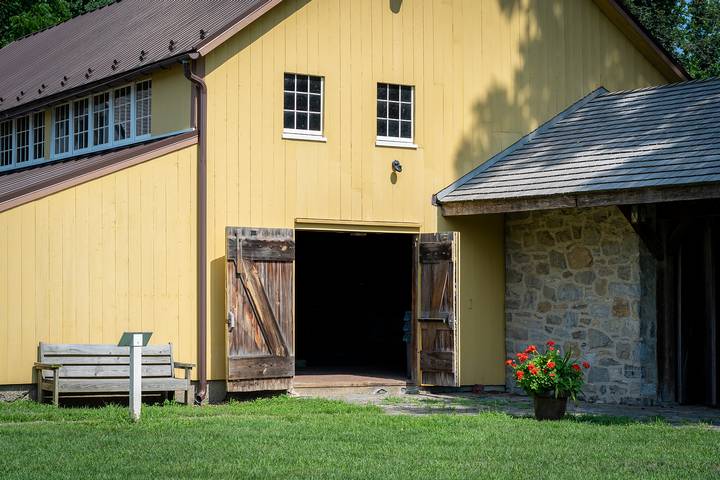
Fans or air circulators are electrical appliances designed to remove unwanted air and moisture from structures while bringing freshness. These appliances make an excellent ventilation option for your barns, as many farmers have used and approved them.
However, you should purchase fans specially designed for barns, not residential spaces, for more functionality. Ensure to situate the barn ventilation away from reach by animals or accidental touch (by yourself or fellow farmers) to prevent related accidents.
Barn Doors and Windows
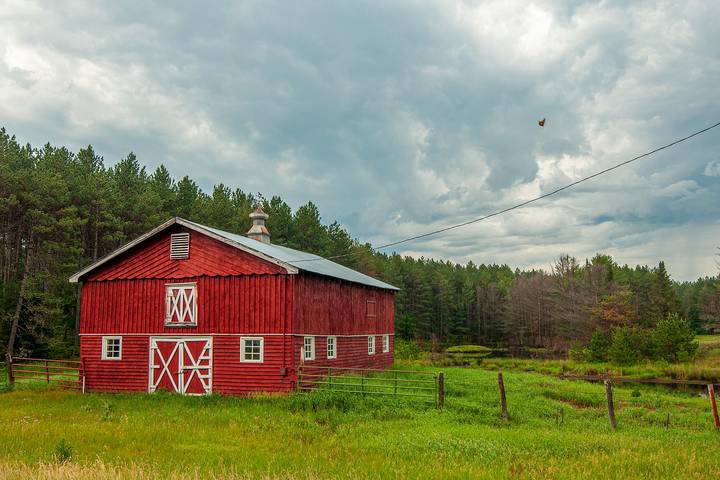
Barn doors and windows are the most popular way of ventilating the structure. This style involves adding doors and windows to the barn during construction. Doors and windows help to facilitate a balance between the inside and outside air.
You can add at least two doors in the structure located strategically for maximum airflow. The number of windows in a barn often depends on size, but a minimum of two would be ideal.
Barn Copulas
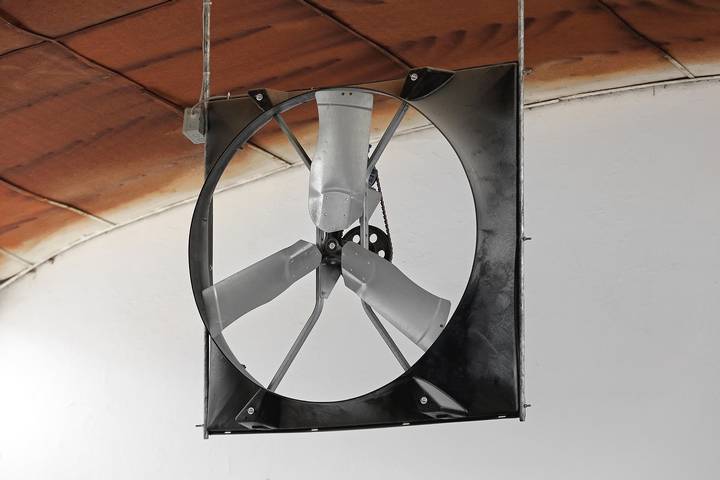
Many people, including farmers, think copulas are only added to barns to enhance the visual appeal. These extensions, usually situated on the barn roof, play a significant role in ventilation in the structure.
Many copulas are designed with tiny spaces on the sides, which allow excess heat and unpleasant air to escape. Adding a copula to your barn alongside the doors and windows would be a great way of facilitating ventilation.
Side Wall Openings
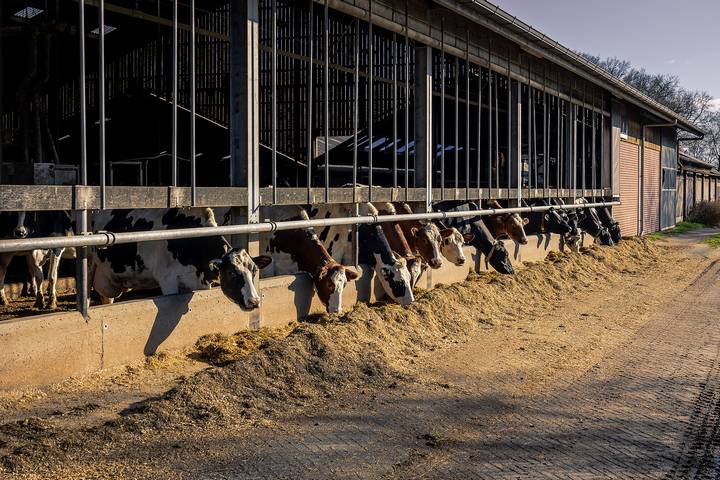
Side wall openings (overhangs) are another practical way of ventilating a barn. As the term suggests, these ventilation systems allow the rising warm air from the barn to exit. They also minimize pressure on the lower surfaces of the barn, letting fresh and cooler air enter through the windows and doors. Sidewall overhangs can be a combination of soffit and roof vents.
How Barn Ventilation Systems Work
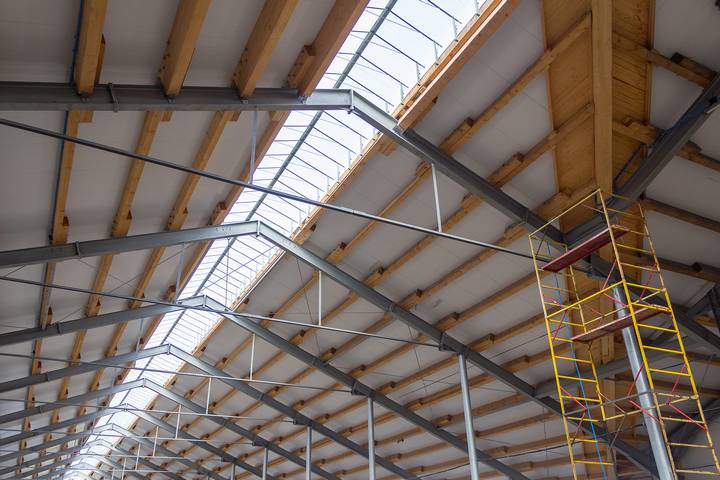
While you have various barn ventilation options, choosing them appropriately enhances their functionality and saves on the costs of replacement or constant repairs. Here are factors to consider when choosing a barn ventilation system that will serve you well.
Type of Livestock or Products
The type of livestock or items in the barn profoundly influences the ventilation system you can embrace. For instance, you may require different ventilation systems for horses and goats, animal feeds, and farm machinery. Therefore, before settling for a particular ventilation option, you should evaluate what you’ll store in the structure for more desirable outcomes.
Barn Size or Design
The size and design of the barn also influence what ventilation system you can go for. Small barns may work well with just doors and windows, while larger ones might need a combination. If you have a large barn, you can blend the doors and windows with air circulators and a copula for maximum ventilation.
Climate
You must consider the climatic conditions of your region before setting up a particular barn ventilation system. For instance, farmers in cold areas might not require adding extra windows and doors for ventilation but insulating the structure for adequate temperature control. Conversely, farmers from hot areas are good to go with any combination of the above ventilation systems with the traditional doors and windows.
Affordability, Energy Efficiency, and Regulations
Other factors to consider when adding ventilation to a barn include affordability, energy efficiency, and regulations. Whichever system you go for should align with your budget and financial strength.
Regarding energy efficiency, farmers should opt for barn ventilation systems that are less costly or control their usage to reduce the bill. Your preferred ventilation system should also align with the local and national regulations and barn requirements.
Benefits of Barn Ventilation
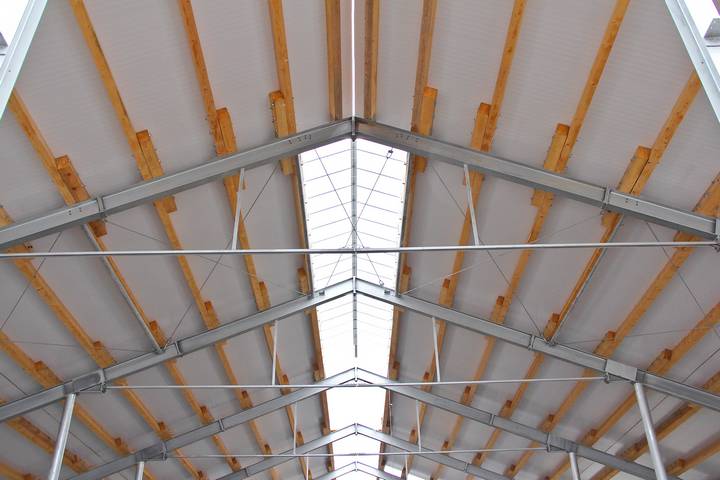
Barn ventilation benefits the animals, feeds, supplies, or whatever they host, and farmers. Some of its key benefits include:
Environmental Benefits
Adding ventilation to your barn is a way of complying with the environmental regulations for farmers, as witnessed in many provinces. That way, you’ll be safer against the law enforcers.
Productivity Benefits
Barn ventilation enhances animal productivity through better skin, good weight, a high egg-laying or milk production rate, and general health. You’ll be saved from endless health issues and potential losses.
Sanitary Benefits
A well-ventilated barn is naturally more appealing even to the farmer as it’s free from unpleasant odours potentially caused by moisture accumulation and harmful gasses.
Financial Benefits
Ventilating your barn makes it more energy efficient by minimizing artificial heating and cooling costs. This efficiency may save some pennies on your electricity bill.





